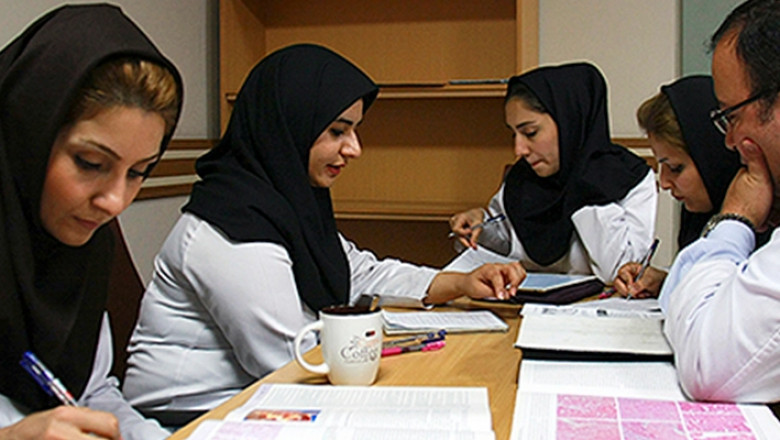views
Studying MBBS in Nepal has become an increasingly popular choice among Indian students in recent years. In 2025, this trend continues to rise, and for good reasons. From geographical proximity to cost-effective education and cultural familiarity, pursuing an MBBS degree in Nepal offers a variety of advantages for Indian medical aspirants.
This article explores the key factors that make Nepal an ideal choice for Indian students to pursue MBBS.
1. NMC-Approved Medical Colleges
One of the primary reasons why Indian students prefer Nepal is that several medical colleges in Nepal are recognized by the National Medical Commission (NMC) (formerly MCI). This recognition means that Indian students who complete their MBBS in Nepal are eligible to appear for the Foreign Medical Graduate Examination (FMGE) in India to obtain a license for medical practice.
Top NMC-Approved Colleges in Nepal:
-
Kathmandu Medical College
-
Manipal College of Medical Sciences
-
B.P. Koirala Institute of Health Sciences
-
Nobel Medical College
-
Nepalgunj Medical College
2. Affordable Fee Structure
The MBBS fees in Nepal in 2025 are significantly more affordable compared to private medical colleges in India and other international destinations like the USA, UK, or Australia. The total cost of studying MBBS in Nepal ranges between INR 45 to 65 lakhs, including tuition fees and accommodation, making it a budget-friendly option for middle-class families.
Sample MBBS Fee Structure in Nepal (2025):
| University Name | Total Fee (INR) | Duration |
|---|---|---|
| Kathmandu Medical College | ₹55-60 Lakhs | 5.5 Years |
| Manipal College of Medical Sciences | ₹50-55 Lakhs | 5.5 Years |
| Nobel Medical College | ₹45-50 Lakhs | 5.5 Years |
3. No Language Barrier
Unlike countries such as China or Russia, where students must learn the local language to communicate with patients, the medium of instruction for MBBS in Nepal is English. Moreover, since Hindi and Nepali languages are quite similar, Indian students face no significant language barriers when conversing with patients during clinical practice.
This linguistic similarity helps Indian students feel at ease both inside and outside the classroom, improving their overall learning and living experience.
4. NEET Qualification is Sufficient
To study MBBS in Nepal, Indian students are only required to qualify for the NEET (National Eligibility cum Entrance Test). There is no additional entrance exam or requirement for language proficiency tests like IELTS or TOEFL. This makes the admission process much simpler and more accessible for Indian students.
5. Similar Curriculum and Study Pattern
The MBBS syllabus in Nepal follows a curriculum similar to that of Indian medical universities. Subjects like Anatomy, Biochemistry, Physiology, Pathology, Microbiology, and Pharmacology are taught in a comparable structure.
Moreover, clinical exposure begins early in the course, giving students hands-on practical experience in affiliated hospitals—just like in Indian medical colleges.
6. Cultural and Geographical Proximity
India and Nepal share strong cultural, historical, and religious ties. Indian students feel at home due to familiar cuisine, festivals, traditions, and a friendly environment. The geographical closeness is another advantage, as it allows easy travel from India to Nepal via flights, trains, or even roadways.
Popular cities like Kathmandu, Pokhara, and Biratnagar are well-connected with major Indian cities such as Delhi, Lucknow, Patna, and Kolkata.
7. Globally Recognized Degree
Medical degrees from top medical universities in Nepal are recognized not only by the NMC but also by international bodies like the World Health Organization (WHO) and Education Commission for Foreign Medical Graduates (ECFMG).
This recognition opens doors for Indian students to pursue post-graduate studies or practice medicine in countries like the USA, UK, Canada, and Australia after clearing the respective licensing exams.
8. Excellent Clinical Exposure
Most medical colleges in Nepal have their own well-equipped teaching hospitals, offering rich clinical exposure to students. The patient inflow is also high, which allows students to interact with real-time cases, enhancing their diagnostic and practical skills.
Nepal’s healthcare challenges are somewhat similar to those in India, helping students gain relevant clinical experience that will be useful once they start practicing in India or abroad.
9. Safe and Friendly Environment
Nepal is considered a safe and peaceful country for international students, especially Indians. The people are warm, welcoming, and respectful. Medical colleges also have separate hostels for boys and girls, equipped with Indian food, 24/7 security, and other necessary facilities.
10. High FMGE Pass Percentage
Students graduating from Nepalese medical colleges generally have a higher FMGE (Foreign Medical Graduate Exam) pass percentage compared to those from other countries like China, Ukraine, or Kyrgyzstan. This indicates the quality of education and clinical training provided in Nepal.
According to recent data:
-
FMGE Pass Rate from Nepal: ~25% to 30%
-
FMGE Pass Rate from other countries (average): 10% to 15%
11. No Donation or Capitation Fee
Private medical colleges in India often demand a hefty donation or capitation fee, sometimes as high as ₹1 crore. In contrast, MBBS admission in Nepal is purely merit-based, and no donation is required. This transparency in the admission process is one of the key reasons why Indian students are opting for Nepal over Indian private colleges.
12. Scholarships and Financial Assistance
Some universities and institutions in Nepal offer scholarship opportunities for deserving and meritorious Indian students. These scholarships help reduce the financial burden and motivate students to perform well academically.
Students can also avail of education loans from Indian banks for studying MBBS in Nepal as the colleges are NMC-approved.
Conclusion
In 2025, Nepal continues to be one of the most preferred destinations for Indian students aspiring to become doctors. With affordable fees, NMC recognition, cultural similarities, English medium instruction, and excellent clinical training, Nepal offers the perfect blend of quality and value in medical education.
For Indian students who want to pursue MBBS abroad but remain close to home without compromising on education quality, MBBS in Nepal in 2025 is a smart, safe, and practical choice.














Comments
0 comment